Zendikar Rising spoiler season has been exciting and contentious. To me, it’s the best set of new cards for cube since Throne of Eldraine, and it’s got far more cards worth testing than Throne had. The overwhelming contributor as to why this is true is the brilliant design innovation of Modal Double Faced Cards, or MDFCs.
Earlier this week, fellow Hipster Zach Barash wrote an excellent article on the evolution of DFCs. His thought process on the new MDFCs is sound; he points to where and why these card designs are significant. The value is not only in being modal when drawn during the game, but also during deck construction. If I can cut a land for Sea Gate Restoration in my controlling Blue deck, I am increasing the number of spells in my deck while supporting my manabase.
Any work WotC is doing to give me more control over my mana I love, and the MDFCs begin a new paradigm for how we will build and support our mana bases while retaining a good spell/threat density. There’s a bit more to say about these cards, but I’ll get to that later.
If the whole of Zendikar Rising’s contribution to cube was the MDFCs, I’d be overjoyed—but lucky for us! It’s way more than that. We have a myriad ripe for testing—with some not needing much convincing, either—so let’s comb over the list of cards I’m the most excited about from the set. I thought I’d try the whole “Top 10” countdown thing, so here goes nothing!
#10—Roil Eruption
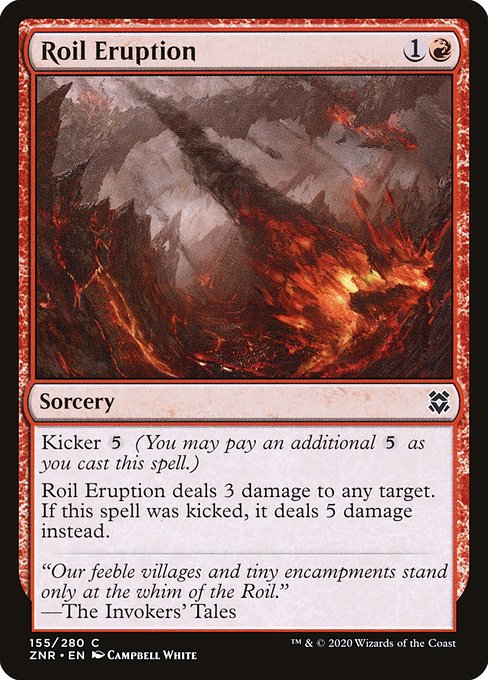
It comes as no surprise to some of you that I enthusiastically support Red aggro, and have jammed my cube with efficient burn spells that are each guaranteed to go face. I already run both Volcanic Hammer and Fire Ambush, so you’d better believe Roil Eruption is a slam dunk. Complaints about it being sorcery speed are overrated. Cheap burn is cheap burn, and you’re doing yourself a disservice not running these slightly-worse-but-still-good spells for your Red mages. “Any target” is about as flexible as it gets, right? Now, the real question is: should I bother keeping a tally of how many times I kick this spell? Nah.
#9—Bloodchief’s Thirst
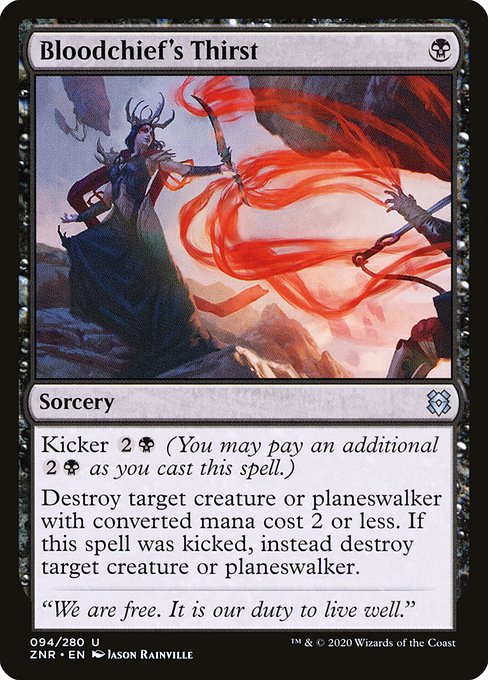
Now this is a card where the kicker cost really matters. I see Bloodchief’s Thirst existing somewhere between a bad Fatal Push and a much better Dead Weight, and that’s a great place to be. Cheap removal is cheap removal. When a cube craves it you’ll play whatever’s available, because even the bad ones still perform. Another instance where sorcery speed is a non-issue for me, as the flexibility beats the timing restriction. There are those of us who run Ruinous Path and Never // Return, and Bloodchief’s Thirst is better than both of these cards.
#8—Nullpriest of Oblivion
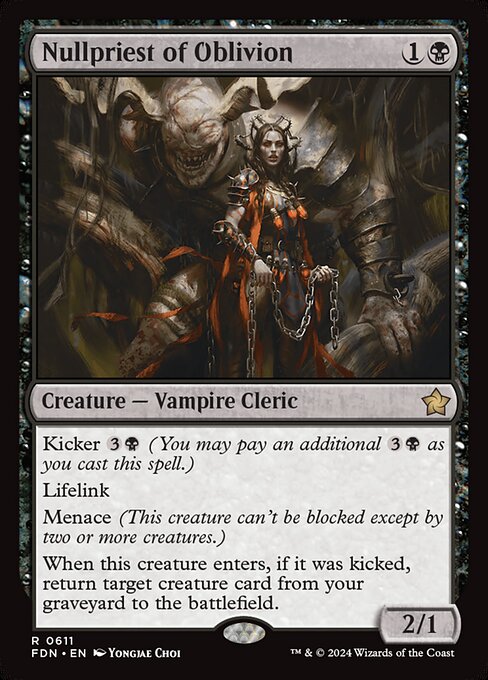
Black Aggro (Blaggro) has long been starved for better two drops, and this is one of two new cards giving the archetype a measurable power boost. Nullpriest of Oblivion is a fine beatdown creature on its own. We have Menace for the bigger creature decks and lifelink for effectively racing opposing aggressive decks. Fine, if a slightly better Child of Night, but would never cut it on its own.
It’s the kicker on this card that’s really something, sliding elegantly into the Blaggro gameplan of beating down with recursive creatures. It also offers us an edge to the midrange cubes who enjoy bolstering reanimation strategies with creatures like Rotting Regisaur and Heir of Falkenrath. At some point it becomes less about synergy than pure value, but the possibility of Zombifying Griselbrand or Grave Titan out of the yard while keeping up pressure could be exciting for the more combo-minded cubers out there.
#7—Skyclave Shade
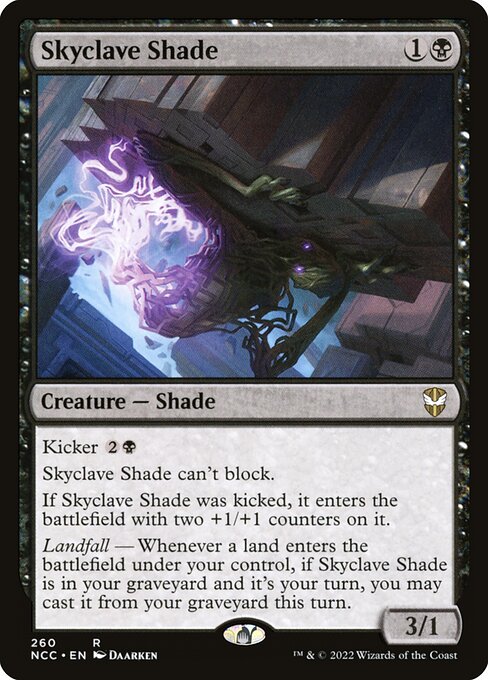
Okay, so there’s Blaggro two drops, and then there’s this card. Setting aside the premise that this is basically a fixed Bloodghast, Blaggro strategies have previously turned to cards like Despoiler of Souls or Asylum Visitor for cost-efficient, hard-hitting role players. With Skyclave Shade the bar has been raised. This card is great at almost any point in the game, save for that it can’t block, and gets massive when cast with kicker. Between this and Nullpriest of Oblivion being printed, I’m sure we’ll have some renewed interest in cubers experimenting with the Blaggro archetype.
I say this, by the way, because while the archetype has historically had legs, it has always been right on the edge of the necessary critical mass support. That’s been mostly due to the lack of powerful two drops. We no longer have this problem. Blaggro is awesome—yes, my favorite color is indeed Black—and it doesn’t get the respect it deserves by many a cube curator.
#6—Kazandu Mammoth
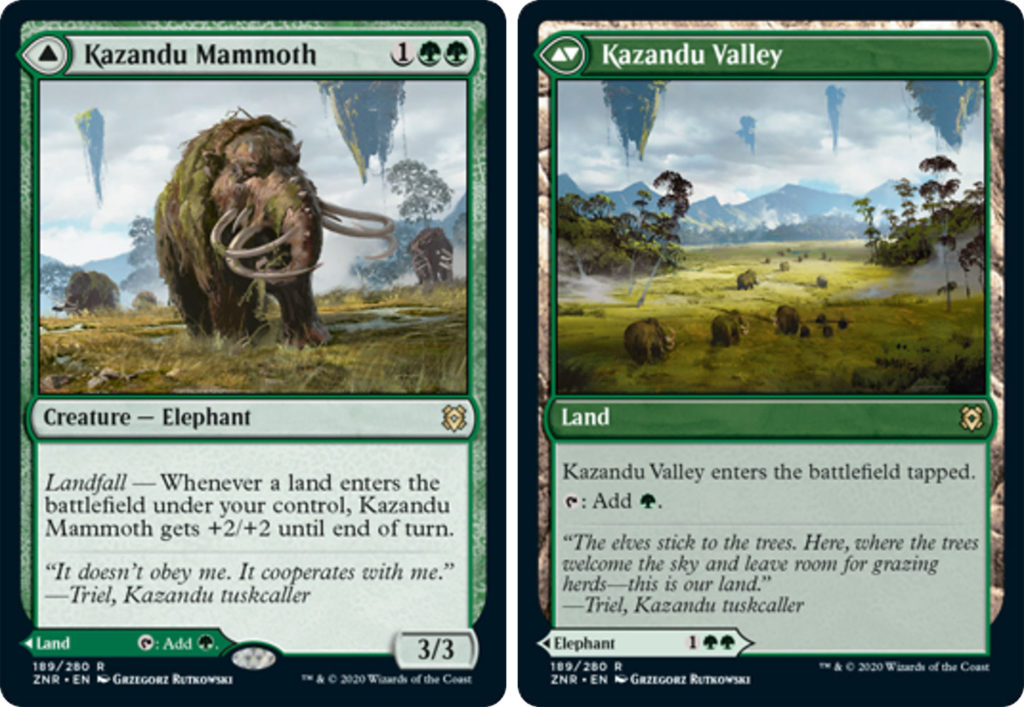
I couldn’t decide on which of the rare MDFCs to talk about. Kazandu Mammoth supports a Midrange Green Beef plan over a Super-Duper Ramp plan, so this card pleases my cubes design goals.
Zvi Moshowitz recently stated on his podcast with Brian David-Marshall that the MDFCs reminded him of Landcycling, a mechanic that many constructed decks were happy to run in the late 90s. Ah yes, back in the old days, when we had to pay two mana and cycle our cards to get basic lands, and the spells were, most of the time, pretty bad! Compare that to the MDFCs which essentially cycle for zero mana, and are also inherently much better cards.
Kazandu Mammoth is, on it’s face, a solid turn two play off a mana dork, and it beats down pretty hard with very little effort. It also takes up a land slot, and not a spell slot.
Let me say that again, in case it hasn’t absorbed yet.
Kazandu Mammoth takes up a land slot, and not a spell slot.
This means you are, on average, more threat dense than if this card had, say, cycling 1. That’s a big deal.
Yes, the cost of a tapped land is real, but by how much? My inital observation is that the slower your deck, the less likely you are to stumble from the tempo loss. Only testing will tell whether this cost is felt enough to warrant it’s exclusion from your environment, but for now it’s safe to say we’ve never had this problem before. Nevertheless, this is a very, very strong mechanic, and I look forward to seeing how these cards play out.
#5—Kargan Intimidator
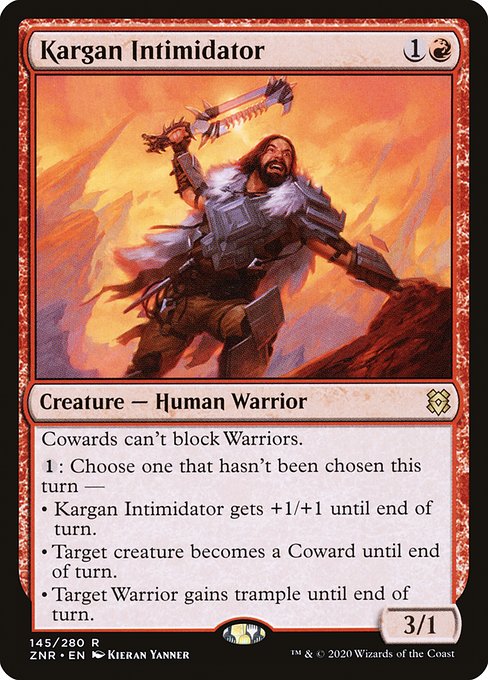
While not the strongest card relative to it’s rank on the list, Kargan Intimidator is a home run based on that static text alone! Red isn’t known for being short on aggressive two drops, but I can’t help myself here. For the low, low price of a single colorless mana it can grow into a 4/2, gain trample, or turn the opponents best blocker into a Coward. Evasion, even psuedo-evasion on such aggressive stats is a real treat, and I think any cube supporting Red aggro will be happy to play this card.
#4—Sea Gate Stormcaller
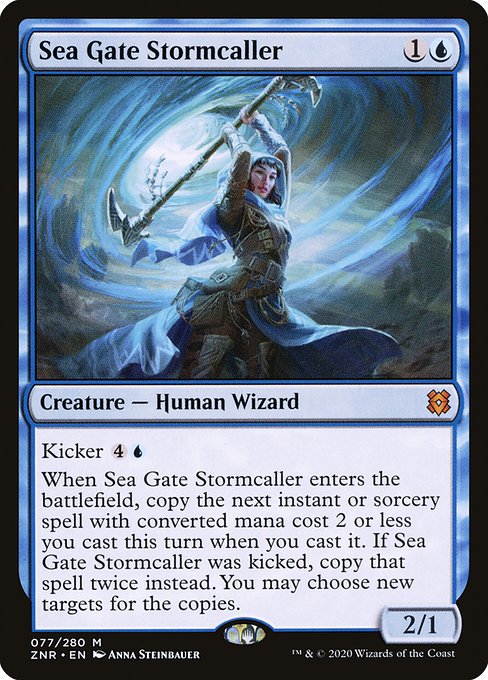
Don’t call it the next Snapcaster Mage, but there’s enough to be excited about with Sea Gate Stormcaller. By turn three we can copy something cheap: Ponder, Lightning Bolt, or Thoughtseize, for instance. These are all strong spells to be copying, but the problem I’m seeing is you’d need to not cast your good turn one play on turn one. It’s potentially awkward, but not unreasonable depending upon the texture of your hand. Forking removal or card selection can be worth waiting for, and that’s to say nothing of simply playing this on turn two when the opponent comes out swinging. The card has a very high ceiling.
The greater the density of cheap spells you run in your cube—and I run a lot of them—the better this card gets. I’m excited to discover the play patterns with Sea Gate Stormcaller, and I expect zero of them to include paying the kicker cost.
#3—Emeria’s Call
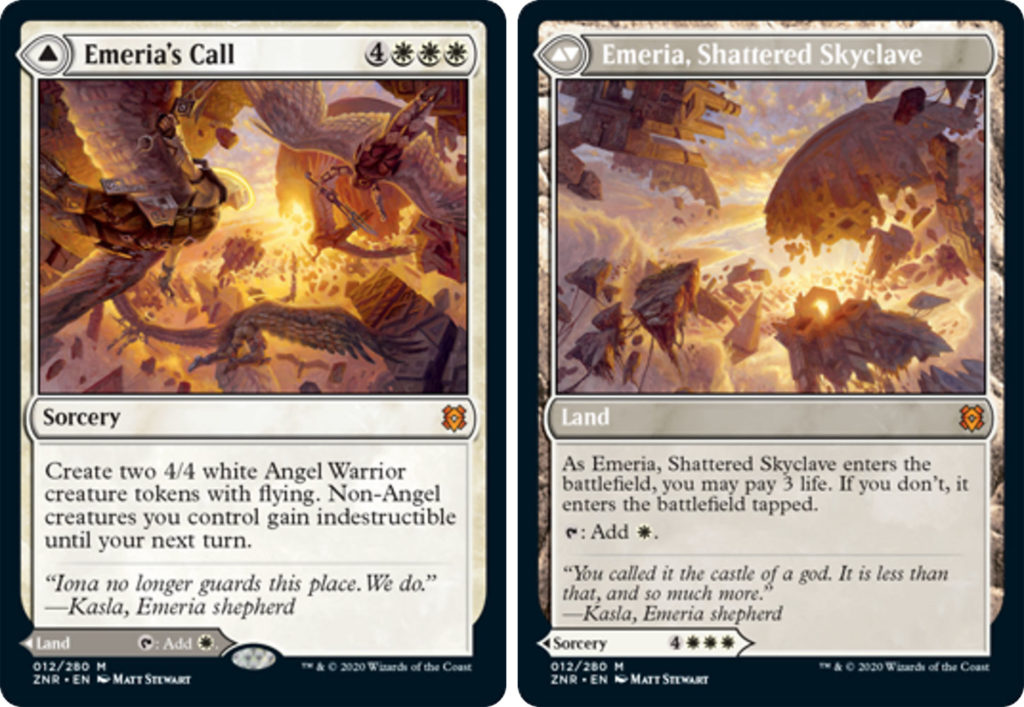
When your land is not only a spell, but a legit win condition—a land that’s also Broodmate Dragon—we’ve got something truly powerful going on. Of the five Mythics in the cycle, Emeria’s Call is the one I’m most interested in on raw power. It’s not difficult to imagine why these mythics are great when the spell half is not only expensive, but potentially game ending. It’s easy to envision the play pattern of “land early, spell late,” whereas the uncommon or rare variants might still feel a bit muddy to properly evaluate for some, and that’s fine.
All of us cube designers ought to be testing more of the MDFCs than we think we should be, if for nothing else than to discover the impact they’ll have on deckbuilding decisions. What a time to be alive.
#2—Jace, Mirror Mage
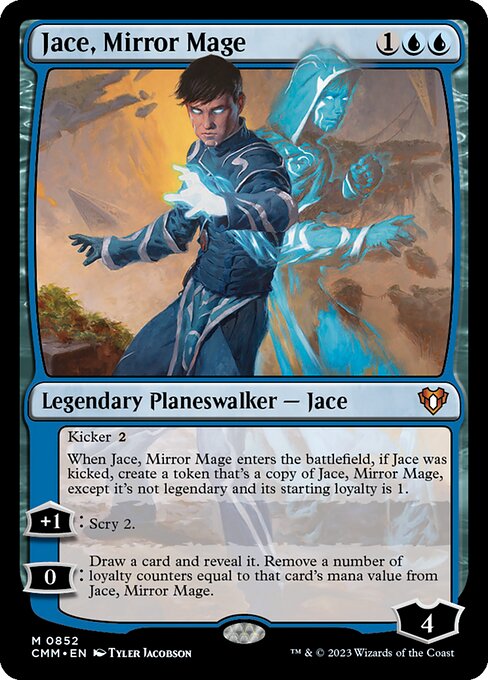
I wedged Jace in-between the strongest MDFCs in the rankings because I had no choice but to do so. Because this card is strong, by far the best non-MDFC in the set. We finally (finally??) get a planeswalker with kicker, and boy oh boy is it a good one.
After the printing of Oko, Thief of Crowns I think we have fully learned that most three-mana planeswalkers are borderline ridiculous. While Jace, Mirror Mage can’t protect himself, he still qualifies as such so long as you can manage the board state. Controlling Blue decks will love only having to invest three mana into this card; and at five mana you have, at worst, two Planeswalkers in play and Scrying 4 each turn you can untap with them. The average case, however, might be closer to casting Preordain.
Between Jace, Mirror Mage, Jace, Wielder of Mysteries, and Mu Yanling we’ve had quite the year of bolstering the Blue planeswalkers for our cubes. If I’m even half as impressed by this card as I am these other two recent printings, I can’t wait to sleeve this one up.
#1—Pathway Lands
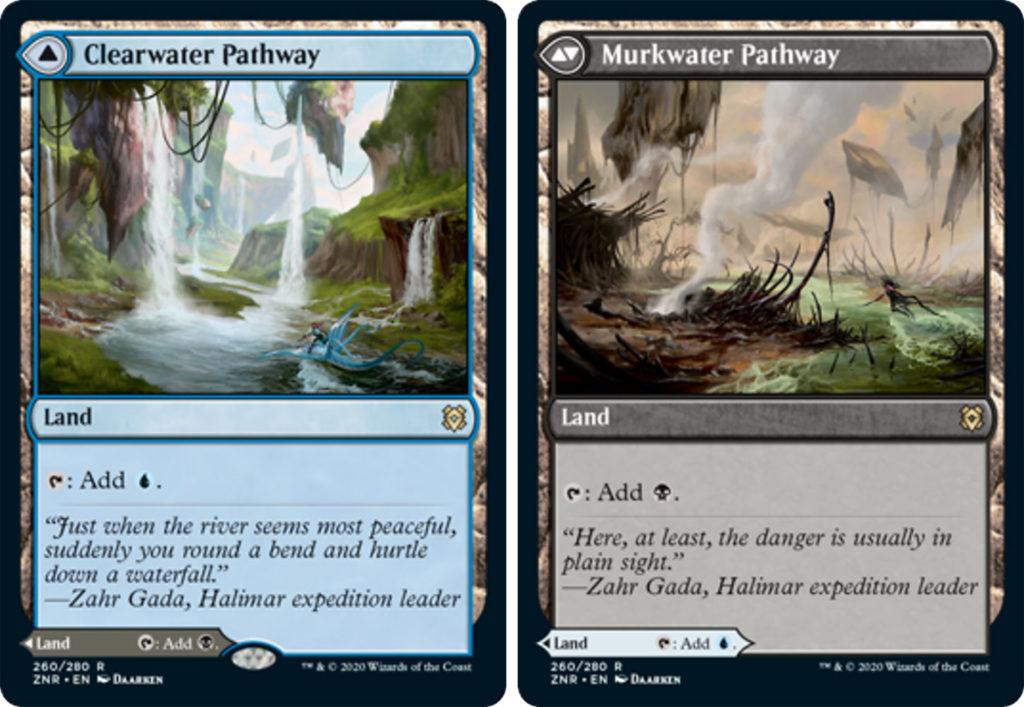
How would you feel if I said you could put another set of fetchlands into your singleton cube, but they only got basic lands and didn’t cost you any life? Welcome to the newest cycle of dual lands! The Pathways are some of the better dual lands we’ve seen in a long time: 100% of the time they ETB untapped, and they have no downside.
Apparently there is some confusion in the cube community over the power level of these lands. Allow me to put it this way, in case it has not been made clear enough: these are about as powerful as basic lands, and in some ways better than basic lands. And basic lands are among the best cards in all of Magic.
Sure, they don’t have basic land types and can’t interact as well as the Fetch/Dual or Fetch/Shock mana bases. But we’ve been spoiled by nonbasic lands, to the point where we risk missing the power level of a land that will always enter play untapped, and provides us with a “free” choice.
The pathway lands are not broken, but they’re perfect lands for cube, and I can’t wait to have the full cycle next year. If you aren’t excited by them, test them. I guarantee you’ll be impressed.
Tune in next time where I attempt to go over all the cards I tested from 2019, and how they’ve ended up after a year or so. Thanks for reading!

